Catholics
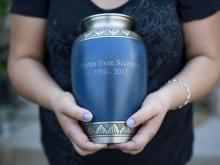
Catholics can be cremated under certain conditions, the Vatican has said, but loved ones should not scatter the ashes at sea, or on land, or into the wind, nor should they keep them in mementos or jewelry.
Instead, say new guidelines released on Oct. 25, the remains should be stored “in a sacred place” that “prevents the faithful departed from being forgotten” and “prevents any unfitting or superstitious practices.”
A poll by PRRI, published Oct. 19, shows that 72 percent of white evangelical Protestants now believe that immoral behavior by an elected official doesn’t mean the official is incapable of performing their duties. This is a vast increase from the year 2011, when only 30 percent of white evangelical Protestants shared this view.

In the two decades since his death from a heart attack at age 64, Nouwen’s popularity and influence have spawned at least five biographies. His reflections on faith, loneliness, vulnerability, love, prayer, social justice, and sexuality have won over modern audiences.
But this beloved priest had an even more intimate side, known only to those who corresponded with him privately.

“I think there are a lot of nones who miss singing in the choir, who would love to go into a building and hear a moving speech, but the minute someone starts talking about the Bible they check out. It no longer feels applicable to them. That’s a big challenge to the church.”
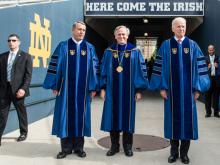
Both politicians spoke of how their families and their Catholic faith, in small personal moments, in joy and in tragedy, had inspired and informed their decades of political service.
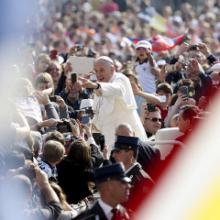
Overall, 67 percent of Americans and 90 percent of U.S. Catholics hold a favorable view of the pope.
“Americans embrace Pope Francis as a celebrity — even when they don’t know what he thinks or does,” said Robert Jones, president and CEO of PRRI.
Many attached glowing traits to Francis. Asked to describe him in their own words, most just identified him by his role as pope or other neutral terms, but 27 percent chose positive terms, calling him “humble,” “compassionate” and “caring.”
The majority share his top priorities — on concern for the poor, the environment, and the economy. But the flock veers from the shepherd on doctrine, particularly on sexuality and marriage.
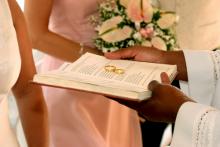
A LifeWay Research survey released last week on the morality of divorce found that for most Americans, the reason an individual initiates divorce doesn’t matter in terms of how they morally evaluate the rightness or wrongness of that divorce. Pastors, though, still tend to draw moral distinctions between reasons for divorce.
Based on years of research on Christian tradition as it pertains to marriage and divorce, I can tell you what this finding means. The answer is not especially pretty: Routine divorce is now inevitable in American culture, including among religious people — with one possible exception.
Let’s take this problem apart.

In March 2015, the Public Religion Research Institute (PRRI) conducted a general survey on American religious affiliation, irrespective of geographic setting. According to that survey, the three largest religious groups in the United States are Catholics (22 percent), the religiously unaffiliated (22 percent), and white evangelical Protestants (18 percent).
But what religious groups dominate in urban centers? And in which cities do certain religious groups dominate?
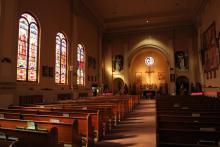
The United States is a significantly less Christian country than it was seven years ago.
That’s the top finding – one that will ricochet through American faith, culture, and politics – in the Pew Research Center’s newest report, “America’s Changing Religious Landscape,” released May 12.
This trend “is big, it’s broad, and it’s everywhere,” said Alan Cooperman, Pew’s director of religion research.
1. PHOTOS: Painter Immortalized Last Meals of 600 Prisoners Put to Death
Artist Julie Green collects information published in death-row inmates’ death notices about their last moments. She then puts cobalt blue paint to porcelain plates to illustrate their final meals — from pizza and birthday cake to Jolly Ranchers. Her goal: “to continue paining fifty plates a year until capital punishment is abolished.”
2. Net Neutrality Victory Is Civil Rights History in the Making
“Today’s civil rights activists have a much more powerful tool at our disposal – the open Internet. Our ability to be heard, counted, and visible in this democracy now depends on an open Internet, because it allows voices and ideas to spread based on their quality – not the amount of money behind them.”
3. WATCH: It Turns Out Lighting Affects Color
And lots of other things, actually. If you’re still hashing it out with your roommates or spouse about the color of #TheDress, here’s science (and music!) to the rescue. (Team #whiteandgold!) Also, if you need more science, you can always ask Science Mike, who offers this great video explainer.
4. Activists Warn of End of Christian Presence in Middle East
Following ISIS’ kidnapping of at least 90 Assyrian Christians in an attack on about 35 mostly Assyrian settlements, groups in the region warn that we may be witnessing the end of Christian presence in the region: “After the Iraq war of 2003, and since the Syrian crisis began, the persecution unleashed on them – including extortion, kidnappings, murder, the ethnic cleansing of entire swaths of Baghdad, the Nineveh plains, and now much of north-east Syria, has been so vast that their very existence in their ancestral homelands is in grave peril.”
5. In 23 States, the Largest Religious Group Is Now ‘Unaffiliated’
This, according to Public Religion Research Institute’s just-released American Values Atlas, which breaks down various religious and political demographics. Find out the largest religious group in your state at the link!
6. WATCH: Jim Inhofe’s Snowball Has Disproven Climate Change Once and For All
That one time a United States senator — the one who also happens to be the chairman of the environment committee — threw a snowball while on the floor to dispute climate change. Because snow.
7. An Anti-ISIS Summit in Mecca
“Whether ISIS’s deeds are labeled ‘violent extremism’ or ‘Islamized terrorism,’ the conversations in Washington and Mecca had at least one thing in common: They deepened the debate over whether ISIS and its fellow travelers are ‘Islamic,’ and whether the answer matters in the first place. That debate is not just academic. It has real consequences for how the Islamic State’s opponents mount their counteroffensive.”
8. VIDEO: Banksy Goes Undercover in Gaza, Releases MIni-Documentary
The unidentified street artist Banksy has re-emerged in Gaza to create a political mini-documentary about life inside the war-torn region.
9. Why We Must Change How We Change the World
World Relief President and CEO Stephan Bauman’s new book Possible: A Blueprint for Changing How We Change the World is now out. In this piece, he lays out why he is hopeful about the future of efforts to address injustice: “We are caught in a vicious cycle, a dangerous dynamic that shapes our views about the people who experience suffering. As a result, those trapped in poverty are dehumanized and poverty is dumbed down while good, well-intended people really believe they are caring, world-conscious, and ethical. But change is coming.”
10. 10 Things Catholics Are Tired of Hearing
Why do you worship statues? Why do you pray to Mary instead of God? And more confusion in the Protestant understanding of Catholicism. Handy to bookmark for the next inevitable conversation about the purpose of confession or the Apocrypha.

Chances are you’ll see a bunch of folks walking around with shmutz on their foreheads this Wednesday. The ‘Splainer asks what having a dirty forehead has to do with being a Christian and why this ritual is gaining in popularity.
Q: Excuse me, but why do you have dirt on your forehead?
A: Wednesday is Ash Wednesday, the day many Christians mark as the first day of Lent, the time of reflection and penitence leading up to Easter Sunday. Clergy all over the world dispense ashes, usually made by burning the palm fronds distributed on last year’s Palm Sunday, making the sign of the cross on the bowed foreheads before them. As they “impose” or “dispense” the ashes, the pastor or priest reminds each Christian of Genesis 3:19: “For dust you are and to dust you shall return.”
Q: Well, that’s cheerful. Why would anyone want to start a workday on such a downer?
A: It isn’t intended to be a downer. It’s supposed to be a reminder that our lives are short and we must live them to the fullest. OK, maybe it’s a little bit of a downer — that verse from Genesis is what God said to Adam and Eve when he expelled them from the Garden of Eden for their sins. But there’s a big party the night before Ash Wednesday. That’s Mardi Gras, or “Fat Tuesday,” a secular observance that evolved out of “Shrove Tuesday,” the last hurrah – usually marked by eating of pancakes or other sinfully sweet foods – before the solemnity and penance of Lent set in.
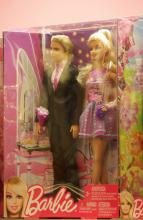
Barbie has had a number of careers in her 55 years — flight attendant, veterinarian, astronaut, even president. Her latest role, however, is raising eyebrows.
Italy’s Catholic bishops are furious about controversial artistic depictions of the popular Barbie and Ken dolls as the Virgin Mary and a crucified Jesus Christ and other saints.
Two Argentinian artists, Marianela Perelli and Pool Paolini, produced 33 dolls of various religious figures for a show named “Barbie, The Plastic Religion,” which opens in Buenos Aires on Oct. 11.
SIR, an Italian website backed by the Italian bishops conference, denounced the controversial toys in an editorial, which asks: ” What is the difference between provocation and bad taste?”
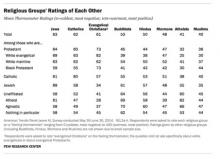
A new Pew Research survey finds U.S. adults feel most warmly about people who share their religion or those they know as family, friends or co-workers.
Americans give their highest scores to Jews, Catholics, and Evangelicals on a zero-to-100 “thermometer” featured in the survey, “How Americans Feel about Religious Groups,” released Wednesday. They’re nestled within a few degrees of each other: Jews, 63; Catholics, 62; evangelicals, 61.
In the middle of the chart: Buddhists, 53; Hindus, 50; Mormons, 48. Trending to the chilly negative zone: atheists at 41 and Muslims at 40.
Pew took the thermal reading because “understanding the question of how religious groups view each other is valuable in a country where religion plays an important role in public life,” said Greg Smith, Pew’s associate director of religion research.
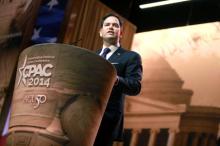
How many voters know that former Florida Gov. Jeb Bush is a Roman Catholic? Or that Texas Sen. Ted Cruz is a Southern Baptist, not a Latino Catholic? Or that Florida Sen. Marco Rubio worships at both a Catholic parish and an evangelical church?
More importantly, does it matter?
Actually, it does in today’s Republican Party, where a number of factors have forged a new religious identity that supersedes familiar old categories.
These prominent Republicans are emblematic of the new religious amalgam that, in many instances, has helped refashion denominational differences that were once almost insurmountable. Look no further than the stunning Virginia primary victory of Dave Brat, a Catholic with degrees from a Reformed Protestant college in Michigan and Princeton Theological Seminary, who took down House Majority Leader Eric Cantor last week.
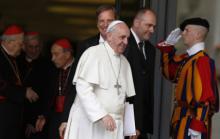
When evangelicals and Catholics set aside centuries of mutual suspicion 20 years ago, the idea was fairly simple: Even if we can’t always work together, at least let’s not work against each other.
Now, two decades after the launch of the group Evangelicals and Catholics Together , relations between the two groups appear stronger than ever, forged by shared battles over abortion, same-sex marriage, religious freedom, and immigration.
A new pope is finding crossover appeal among evangelicals who share Pope Francis’ emphasis on evangelism and his distaste for the fancier trappings and authoritarianism of the papacy.
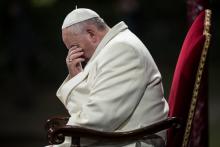
The latest dust-up about the unscripted words of Pope Francis came this week when he tweeted, in Latin, “Inequality is the root of social evil.” Conservative Catholics had their underwear in a bundle, nervously tweeting away about the dangers of addressing complex issues on Twitter, and warning about thinking that “redistribution” would solve global inequities. Some feared this was giving Thomas Piketty’s new popular book, Capital in the Twenty-First Century, more press. Liberal Catholics were delightfully surprised, once again, and argued that the pope was doing nothing more than putting Catholic social teaching into a tweet.
Inequality is the root of social evil.
— Pope Francis (@Pontifex) April 28, 2014But this latest interchange, happening of course between Catholics in the global “North,” misses the real point.
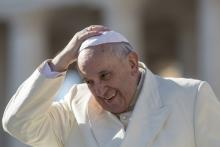
Today the world celebrates Pope Francis’ first year. Notice I didn’t say the church is celebrating, but the world. The pope has graced the covers of every magazine from TIME to Rolling Stone over the past year. People all over the world are delighted by the breath of fresh air he has brought. His popularity has moved beyond Catholics to Christians of all kinds, believers from other faith traditions, agnostics, and the “nones,” who are very drawn to this pope who emphasizes love and simple living.
But the pope said last week that he is not a “ superman” and does not want to be a celebrity. He is just trying to talk and live like Jesus, a point he makes repeatedly to shrug off his media darling standing. From the moment he took the name Francis, he made clear his, and thus the church’s priorities: the poor, peace, and the creation. Francis is now challenging the most powerful people and places in the world, as well as a popular culture that mostly asks how we can serve ourselves.
Pope Francis is right: it is not about him; it’s about the Christ he follows. Everything Francis is saying and doing is aimed at pressing this question: Are Christians going to follow Jesus or not? That should be the question on the first anniversary of this new pope. Are we Christians ready and willing to follow Jesus? How can we then serve the world?

Joe Biden was a young senator from Delaware when he was first exposed to the evils of apartheid. As the only white lawmaker in a congressional delegation to South Africa, he resisted security officers who tried to usher him through one door, and his more senior black colleagues through another.
“I had what we Catholics call an epiphany,” the vice president said Wednesday as official Washington packed the National Cathedral to recall the life and legacy of former South African President Nelson Mandela.
“He was the most impressive man or woman I have ever met in my life,” Biden said of Mandela, who died peacefully on Dec. 5.

Pope Francis on Tuesday released his first apostolic exhortation since his election in March. The message, “Evangelii Gaudium” (“The Joy of the Gospel”), challenges Catholics — both laity and clergy — to pay more attention to evangelizing the world.
While most American evangelicals do not usually read papal pronouncements, it would be a shame if we did not familiarize ourselves with Francis’ newest document, for there is much in it that evangelicals could embrace:

Death may be inevitable, but one in three Americans – including most blacks and Hispanics – want doctors to never quit fighting it.
And that number has nearly doubled in 23 years, a new survey finds.
In 1990, 15 percent of U.S. adults said doctors should do everything possible for a patient, even in the face of incurable illness and pain. Today, 31 percent hold that view, according to a report released Thursday by the Pew Research Center’s Religion & Public Life Project.
The majority of U.S. adults (66 percent) still say there are circumstances when a patient should be allowed to die. At the same time, however, the never-say-die view calling for nonstop aggressive treatment has increased across every religion, race, ethnicity, and level of education.